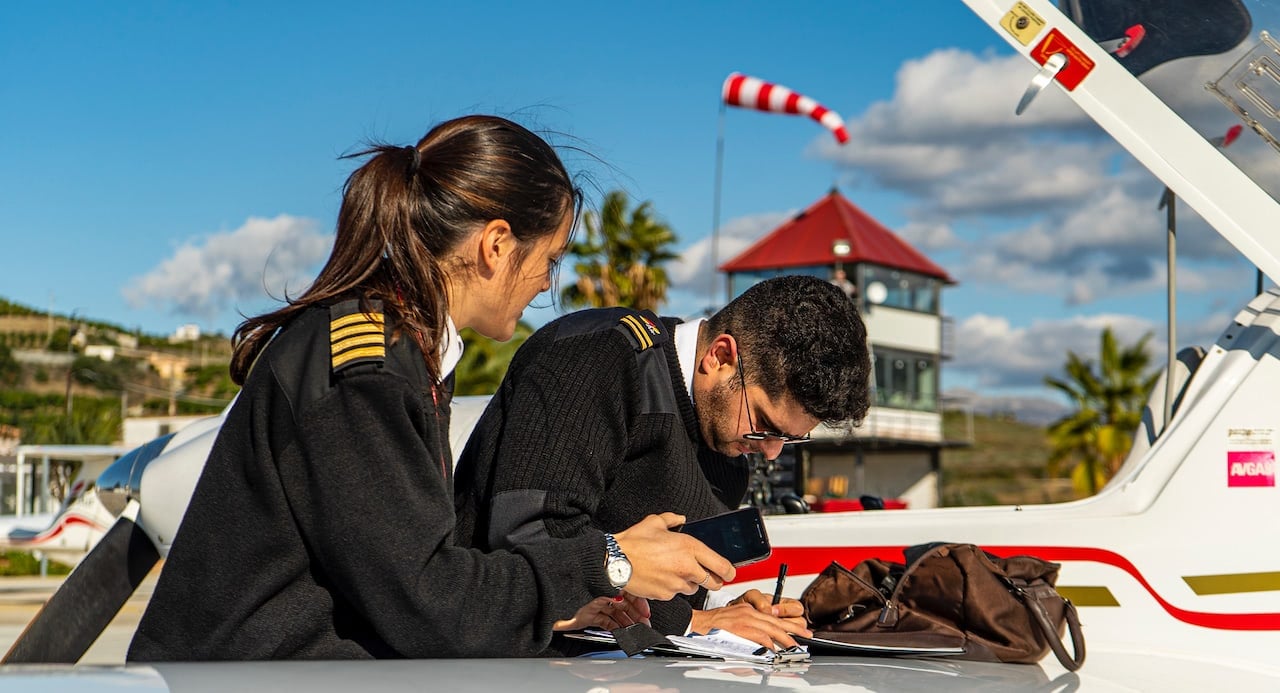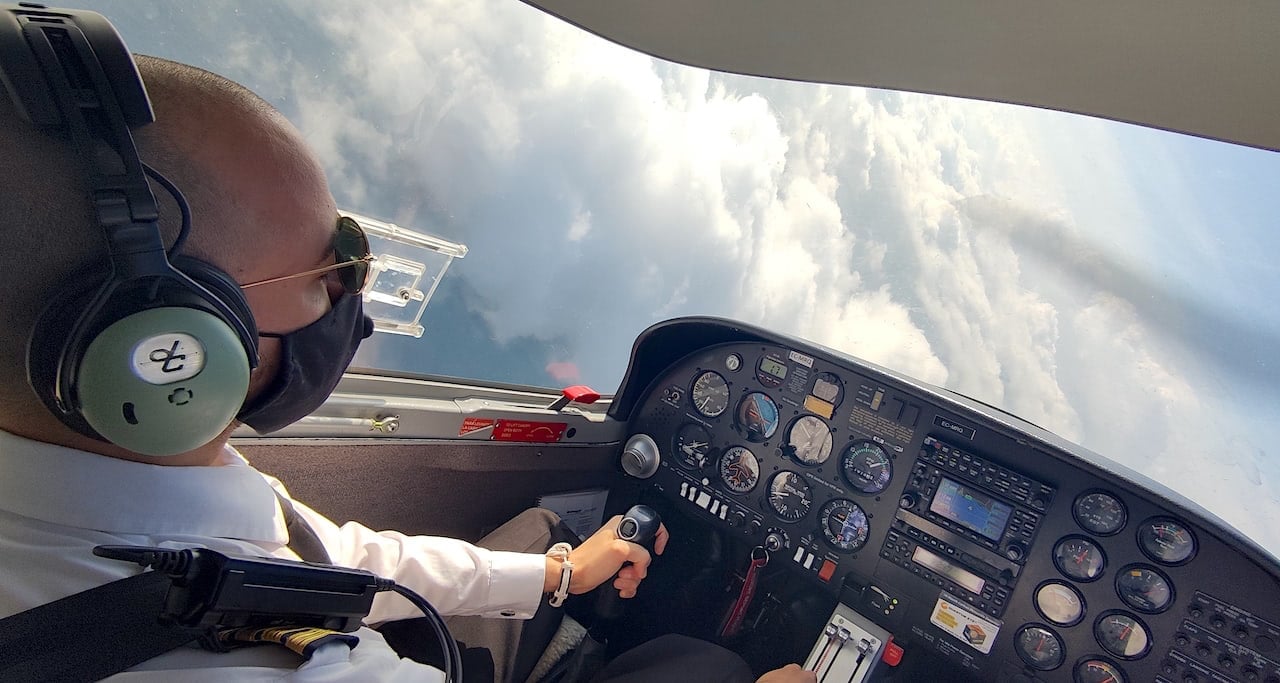Knowing about the information given in each of its blocks is indispensable in understanding METAR reports. Let’s take a closer look at the example and analyse it in detail:
LEMG 211200Z 10013G23KT 9999 SCT014 BKN025 15/12 Q1020 NOSIG
It is shown in the first block by its corresponding ICAO code.
In the example, Malaga International Airport’s code, LEMG, is provided.
The second block gives alphanumeric information about the day and time, the latter, expressed in UTC format.
In this case, the sample was issued the 21st (April, although the month isn’t given) at 12:00Z (Zulu time or UTC)
Direction is measured in degrees, based on the true north and is expressed by the first two numbers of the third block of the METAR. The following numbers show speed expressed in knots.
In the example, we have wind from 100º with an average speed of 13 knots and gusts (G) of up to 23 knots.
Visibility can be found on the fourth block in METAR reports and is expressed in metres.
When it is under 1000 metres, we call it fog whereas when it´s between 1000 and 5000 metres it’s termed mist. We measure visibility in 500s (metres) and when it’s over 5000 metres, in 1000s. When it’s over 10km, it will show as 9999 in METAR.
Let’s go back to our sample to confirm that on the given date and time there was excellent visibility to fly.
Runway visual range or RVR is what the block following visibility shows. This value gives information about the horizontal visibility a pilot has from the cabin.
RVR is only used in foggy conditions or poor visibility and is measured in three runway areas: header, half and end. In our example we can see that on the given day, the visibility was excellent.
In the next block we find cloudiness and this is probably the most complex point if you are not familiarised with METARs. The abbreviated words give information about how covered the sky is, based on a scale which is expressed in oktas and breaks up as follows:
→ SKC: Clear sky; 0 oktas covered.
→ FEW: Few clouds; between 1 and 2 oktas covered.
→ SCT: Scattered clouds; between 3 and 4 oktas covered.
→ BNC: Broken (abundant clouds); between 5 and 7 oktas covered.
→ OVC: Overcast (covered sky); 8 out of 8 oktas covered.
After its corresponding acronym, the next information block shown in METARs is the altitude of clouds in respect to the height of the airport, given in feet. We have to add 2 zeros (00) to the right of this value to obtain the real altitude.
In our example, we have scattered clouds at 1400 feet and abundant clouds (BNC) at 2500 feet.
-
Temperature and dew point:
Temperature in METARs is indicated in degrees centigrade and its relation to dew point is important. Dew point is the temperature at which air saturates, forming fog. Fog appears when the difference between room temperature and dew point is under 2ºC.
Going back to our reference METAR, we’ve got 15ºC and 12ºC dew point. There is no risk of fog formation with a difference of 3ºC between both values.
The following METAR block provides a Q code which indicates the pressure at the airport, measured in hectopascals. This data is essential to figure out the aeroplane’s altimeter and therefore, be able to establish the approach minimums. In our example, we have a QNH of 1020 hectopascals.
What about the last block? It’ll be there at times, but not always. In this case NOSIG indicates no significant changes in meteorology are expected in the next 2 hours.





